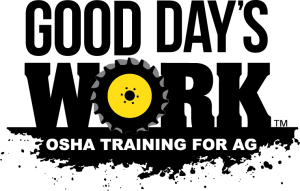Introduction to Compressed Air Wands
 Compressed air wands are the ultimate multitool for professionals and DIYers alike. Need to clean hard-to-reach spots, blast away stubborn debris, dry surfaces, or even fight corrosion? These powerful tools have you covered. With their high-pressure air streams, they cut through tough grime and breeze through complex tasks with ease.
Compressed air wands are the ultimate multitool for professionals and DIYers alike. Need to clean hard-to-reach spots, blast away stubborn debris, dry surfaces, or even fight corrosion? These powerful tools have you covered. With their high-pressure air streams, they cut through tough grime and breeze through complex tasks with ease.
What makes them stand out? Versatility. From precision cleaning to heavy-duty maintenance, compressed air wands are equipped to handle it all. Standard attachments make them perfect for delicate jobs in automotive, manufacturing, and electronics. Switching from cleaning sensitive electronics to tackling industrial grime? Just swap to a specialized nozzle, and you're good to go. It’s your all-in-one solution, no matter the challenge. If you're considering adding a compressed air wand to your toolkit, here's everything you need to know.
Recognizing the Risks



- Excessive Air Pressure
Using air pressure above the recommended levels can harm delicate machinery or create unsafe conditions during use.
- Flying Debris
High-pressure air may dislodge dirt or particles, turning them into fast-moving projectiles that can injure eyes or exposed skin.
- Static Shocks in the Air
Improperly grounded compressed air wands can build up static electricity, creating a serious risk in flammable environments.
- Dangerous Decibels
High-pressure air can be loud—loud enough to damage your hearing over time. Without the right protection, your ears are in for a rough ride.
- PPE: Your Safety Shield
Skipping safety gear? Big mistake. Noise, flying debris, or even a misdirected air stream can cause injuries you don’t see coming. Gear up and stay protected!
Mastering Compressed Air Wand Safety

1. Gear Up with Protective Equipment
The right protective equipment is your first line of defense. Always wear the following gear:
- Safety Glasses or Face Shield: Essential for shielding your eyes and face from flying debris.
- Hearing Protection: High-decibel noise requires the use of earmuffs or earplugs.
- Impact-Resistant Gloves: Protect your hands while maintaining secure control over the tool.
- Dust Mask or Respirator: Safeguard your lungs when working in dusty or poorly ventilated spaces.

2. Prepare the Tool for Use
Proper preparation prevents accidents and improves the wand's performance.
- Inspect Thoroughly: Check hoses, nozzles, and fittings for cracks or wear. Replace damaged parts promptly.
- Select the Right Nozzle: Choose the attachment that suits your specific cleaning or drying task.
- Control the Pressure: Always operate within the manufacturer’s recommended air pressure range.
- Grounding: Prevent static buildup by grounding the tool before use, particularly in settings with flammable materials.

3. Operate with Care
Mindful handling makes all the difference. Follow these operational tips for precision and safety.
- Aim Responsibly: Never point the wand at yourself, others, or fragile items. Focus only on surfaces that can withstand high-pressure air.
- Use Short Bursts: Release air in controlled intervals, reducing the risk of dislodged debris and excessive noise.
- Stay Balanced: Maintain a secure stance and keep your workspace organized to avoid tripping hazards.


4. Keep the Workspace Safe
An organized environment minimizes the chance of accidents.
- Clear Your Area: Remove unnecessary items to prevent obstruction or clutter.
- Ensure Proper Lighting: Bright, focused lighting reduces mistakes and improves accuracy.
- Ventilate the Space: Proper ventilation disperses airborne contaminants and promotes better breathing conditions.

5. Care for Your Equipment
Routine maintenance helps your air wand deliver peak performance over time.
- Clean After Each Use: Remove debris from nozzles and fittings to maintain airflow and prevent blockages.
- Inspect Regularly: Look for signs of cracking in hoses, loosened fittings, or general wear.
- Lubricate Moving Parts: Refer to the manufacturer’s instructions for oiling components.
- Store in a Dry Area: Protect the wand from moisture and extreme temperatures to avoid rust and degradation.
Lessons from Real-Life Incidents
Case Study 1: When Too Much Pressure Backfires
 Picture this: a technician cranks up the air pressure to blast away stubborn grime from machinery. Sure, it worked—until sensitive components were damaged, leading to costly repairs. The takeaway? Stick to the manufacturer’s recommended pressure settings, and save yourself the headache (and the repair bill).
Picture this: a technician cranks up the air pressure to blast away stubborn grime from machinery. Sure, it worked—until sensitive components were damaged, leading to costly repairs. The takeaway? Stick to the manufacturer’s recommended pressure settings, and save yourself the headache (and the repair bill).
Case Study 2: Skipping Safety Can Get Dangerous

Imagine skipping safety goggles during routine cleaning. That’s exactly what one operator did—until a flying particle caused a painful eye injury. The good news? It was entirely preventable with the right gear. Bottom line: PPE isn’t just a suggestion; it’s a must.
Best Practices for Air Wand Safety

- Training Programs: Teach all users about proper operation and common hazards.
- Regular Safety Audits: Inspect equipment and areas of operation to identify potential risks.
- Accessible Gear: Make sure PPE is readily available and that it becomes part of the routine.
- Encourage Feedback: Create an open line of communication for users to highlight concerns or suggest improvements.
Call to Action
 Compressed air wands are game-changers—when used the right way. Got any tips, stories, or lessons learned while using them? We want to hear from you!
Compressed air wands are game-changers—when used the right way. Got any tips, stories, or lessons learned while using them? We want to hear from you!
Drop your insights in the comments and help us make our tool-using community smarter and safer. Let’s work together to keep compressed air wands reliable, efficient, and most importantly, safe for every task they take on. Your experience could make all the difference!


